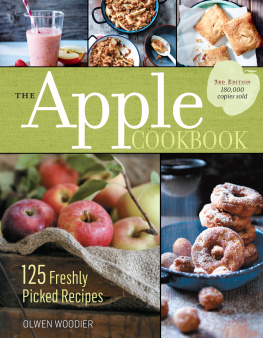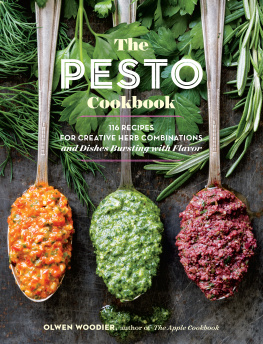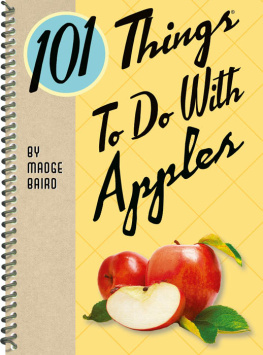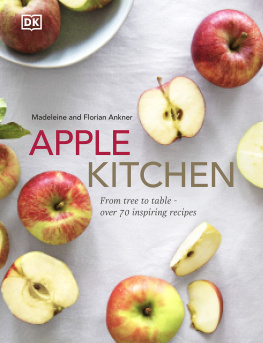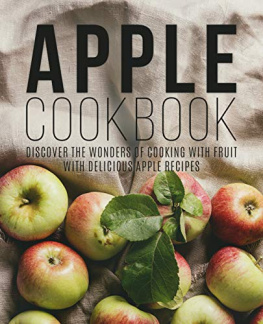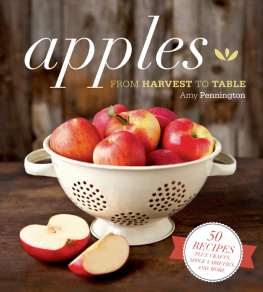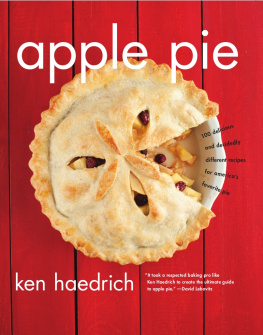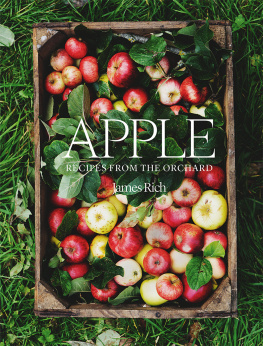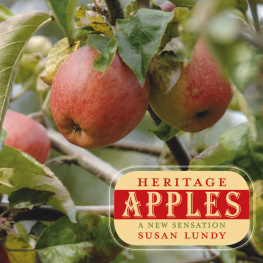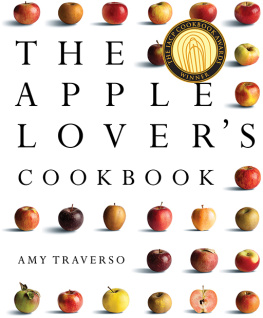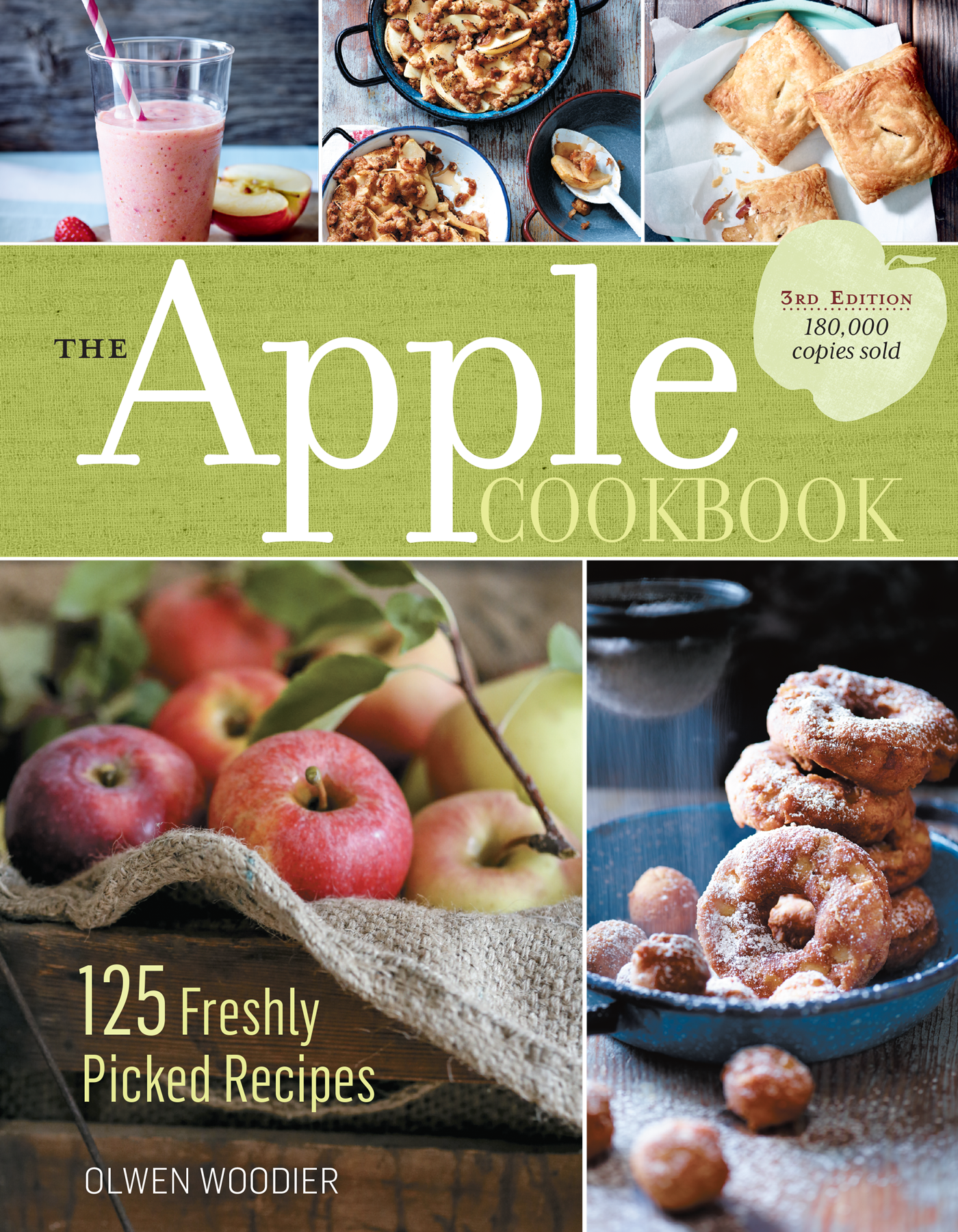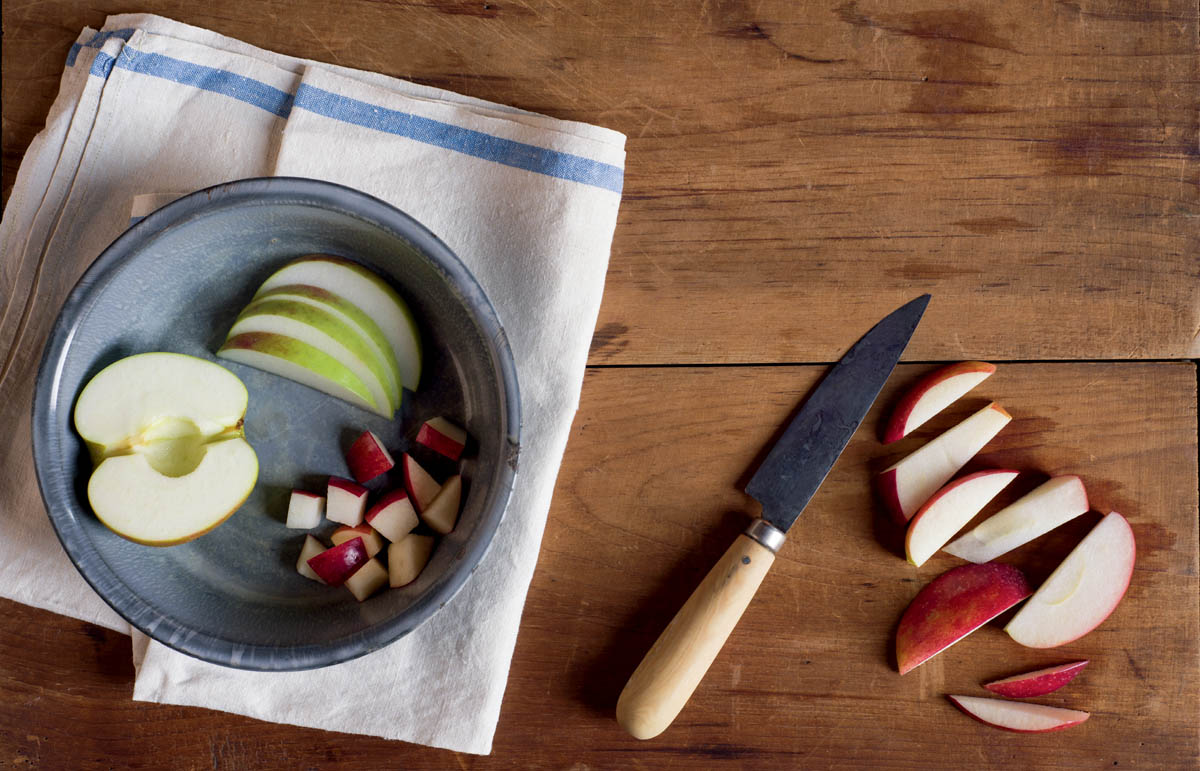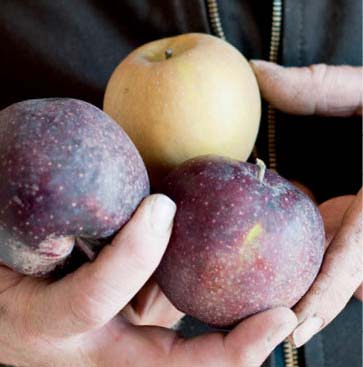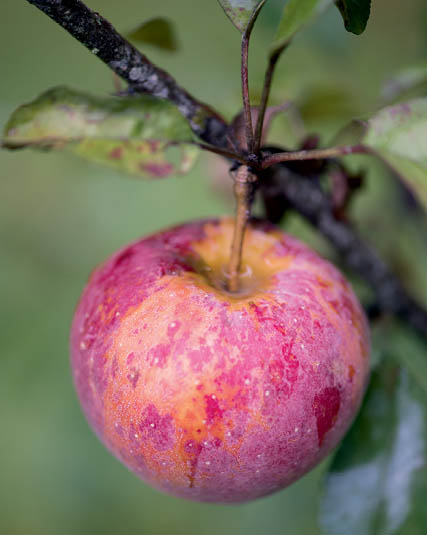Contents
Chapter 1
Introduction to Apples
M an has been munching on apples for about 750,000 years, ever since the food gatherers of early Paleolithic times discovered sour, wild crab apples growing in the forests in Kazakhstan, in central Asia. Botanists now believe that this region holds the key to the genetic origins of the apples we enjoy today.
When U.S. botanists visited Kazakhstan in 1989, they found large stands of ancient apple trees trees that were 300 years old, 50 feet tall, and bearing large, red apples. These trees of Malus sieversii, the wild species now believed to be the parent of all domesticated apples, were discovered in 1929 by Russian botanist Nikolai I. Vavilov.
Unfortunately, Vavilovs work in genetics led to his imprisonment during the Stalin era. He died in prison in 1943. His wonderful discovery was finally announced to the rest of the world by a former student and coworker of Vavilovs, who, at the age of 80, felt the need to pass along the knowledge before it was too late to save the forests of ancient apple trees.
Apples on the Move
The carbonized remains of apples unearthed in Asia Minor indicate that Neolithic farmers were cultivating apples around 8,000 years ago. Later, apples were carried as transportable food by migrating cultures. It is speculated that somewhere along the way M. sieversii hybridized with M. orientalis and M. sylvestris, two wild species producing small and very sour green apples.
There is recorded evidence from 1300 BCE of apple orchards being planted by the Egyptians along the Nile Delta. The Greeks learned grafting techniques around 800 BCE , and by 200 BCE the Romans were planting apple orchards in Britain.
Apples Settle in America
Colonists arriving in America found only four varieties of wild crab apples. However, the French, Dutch, German, and English all brought seeds from their homelands, and it wasnt long before apple trees were growing outside their rustic dwellings. The English colonists were the first to bring apple tree scions (shoots) to North America.
The first American orchard was planted in Boston in 1625 by William Blaxton, an English preacher. A few years later, orchards were established in the same area by John Winthrop and John Endicott, governors of the Bay Colony settlement.
In 1647, Peter Stuyvesant, governor of New Amsterdam (now New York), planted the first Dutch apple trees on his farm, the Bouwerie. The first commercial orchard was planted in Flushing, New York, in 1730.
Thousands of varieties of apple trees evolved during the eighteenth and nineteenth centuries when colonial farmers decided to plant apple seeds instead of acquiring young tree scions arriving from England and continental Europe. As the colonists moved from the Atlantic coast westward, they planted apple seeds along the way.
Favorably influenced by moderately cold winters, the colonists apple crops flourished in the northern regions. Most apple tree varieties require from 1,000 to 1,500 hours of chilly temperatures before they will begin blossom growth in the spring. And the apples, just like autumn leaves, need the perfect marriage of temperatures the warm, sunny days and cool nights that occur in September and October to show off their best qualities.
The Origin of the Apple
On discovering the ancient wild apple groves in central Asia, Nikolai Vavilov rejoiced:
All around the city one could see a vast expanse of wild apples covering the foothills. One could see with his own eyes that this beautiful site was the origin of the cultivated apple.
Americas Favorite Homegrown Fruit
Cultivated throughout the United States, apples are grown for commercial production in 36 states. The main apple-growing regions are Washington, New York, Michigan, Pennsylvania, California, and Virginia. These six states produce most of the countrys annual apple crop, which totaled 259,248 million bushels in 2013. About one-third of the annual U.S. apple crop is processed into juice and canned, frozen, and dehydrated products. The average American eats 50.4 pounds of apples a year. Its not only their year-round availability that makes apples so desirable in the United States; there are a host of other reasons why America loves apples:
- They are delicious, versatile, and easily portable.
- They are nutritious, providing satisfying bulk and few calories. (See for more information.)
- They are 85 to 95 percent water, so if you put one into your pocket or lunch box, you can quench your thirst whenever the need arises.
- Their acid content acts as a natural mouth freshener, which makes apples a perfect ending to a meal.
- They are believed to have many other healthful properties. (See for further information.)
Apple Allure
When Eve was tempted by the serpent in the Garden of Eden to go against Gods wishes and to take what was forbidden of the fruit of the tree which is in the middle of the garden, she saw that the tree was good for food, and that it was pleasant to the eyes, and a tree to be desired to make one wise. No doubt she was also quite taken by the shape, color, and smell of this fruit of the gods.
Imagine yourself picking up an apple for the very first time. Turn it around in your hand. If its one of the russet apples, it will feel rough and dry, not at all like a red-on-yellow Empire with its satiny smooth and tender skin. Hold it to your nose and breathe deeply. The smooth-skinned Empire will have a delicate smell that is difficult to detect beneath its smooth and slightly oily skin. The rough skin of a ripe russet, on the other hand, will exude a tantalizing fragrance.
Most of the perfume cells are concentrated in the skin of an apple. As the apple ripens, the cells give off a stronger aroma. That is why applesauce is most flavorful when made from apples with the skin left on and the best cider is made from the aromatic, tough-skinned russets.
Rosy pink applesauce gets its color from the flesh, not from the skin unless the skin has been pured with the flesh to become an integral part of the sauce. The pigments trapped in the skin cells are not released during cooking, crushing, or pressing because those color cells are impossible to break.
Apple trees not only have taken the fancy of gods and mortals, they attract more than 30 species of birds and a variety of four-legged animals. There are birds that love to nest in the spreading branches. Many birds and beasts feast on the buds, bark, and leaves. The ripe, fallen apples are favored by porcupines, skunks, fox, and deer. Opossums, raccoons, and bears all climb the limbs to get at apple-laden branches.

